The Fragile Sea Newsletter TFS #05
We discuss practical guides for implementing AI, in other news, a revisit on CRISPR, and events in spaceweather, fake publishing, spring blossoms, and more!

Welcome!
The web version for mobile and desk is here
(the references will pop up when selected - not available on the email version)
Welcome to the fifth Fragile Sea newsletter!
We have a whole lot going on here - it's an exciting time to be alive!
Quickreads

- We look at recent progress in AI and focus this newsletter on practical guides for implementing AI
- CRISPR gene editing is revisited with a new AI component
- It looks like we are heading for a global cocoa and chocolate shortage
- Spaceweather has been going a bit crazy lately - at least the aurora borealis are spectacular
- In Media and also in Academe, troubling events are surfacing in AI assembly line publishing, fake academic papers, and predatory journals
- Data on homelessness is also troubling - we should try some new fixes
- A look at two healing stories on solitude, and finding oneself
- Spring blossoms are starting to appear - time for some optimism
- I wrap up in What’s coming up, and finish with a short Kokinshū poem.
- TFS#06 will be out Thursday, 11th April, at 8:00 pm, UTC.
Let's go!
AI, Devtech, Comms

There are tens to hundreds of blogs and sources on AI, it can be hard to keep up. In this newsletter, we look briefly at some of the most interesting developments, though I caution to add that with so many sources, it’s easy to miss a butterfly stretching its wings somewhere, building a storm somewhere else.
Here are the highlights and connections that have excited my neurons these past two weeks, by author, and source.
Practical guides to implementing AI and other AI news
Mark W. Kaelin, TechRepublic, has a good look at Microsoft Copilot, product prices, versions & benefits, and also some scenarios for using CoPilot in Office apps - Word, Excel, PowerPoint (etc) [1].
Dr Tehseen Zia, Unite AI, discusses ‘social learning’ to help AI learn from AI [2]. Google has adopted the approach, I am all for it, for a variety of reasons, which I discuss briefly at the end of my short story Room 5000, released last week, written in 1981.
This theme is also taken up by ScienceDaily in reporting ‘Two artificial intelligences talk to each other’, about a team from the University of Geneva (UNIGE) which succeeded in modelling an artificial neural network that learned and performed some basic tasks and then provided a linguistic description of them to a “sister” AI, which in turn was able to perform them [3], [4].
Devin Coldewey, Tech Crunch, looks at the pitfalls of reviewing LLM models. It’s a refreshing viewpoint and makes me wonder how we will get under the hood to understand what LLMs are doing, in times of such rapid progress [5].
Maybe that is what scientists at UCL have done: Science Daily reports on a development by data and computer scientists at the University of California, San Diego, that can uncover how LLMs learn. By using a formula from statistical analysis, they discovered a streamlined mathematical description of how neural networks learn relevant patterns in data, known as features. It also explains how neural networks use relevant patterns to make predictions [6], [7]. This will be useful to uncover what we can’t seem to find out right now, that is, how LLMs work.
Emma Roth and Quentyn Kennemer, The Verge, analysed the Financial Times AI Chatbot trained on decades of FT articles, and found some inconsistencies; it's a useful article [8].
Brendta Schroeder, MIT News, reports on five MIT faculty members, backed with $75m in funding, planning to tackle some of cancer’s toughest challenges. They plan to improve on recent advances in artificial intelligence, to develop tools in personalized immunotherapies for cancer patients [9].
OpenAI has partnered with Le Monde and Prisa Media to bring French and Spanish news content to ChatGPT users. They can interact with relevant news content, with the ability to access the respective news sites for more information [10]. Given the perceptions - fears, even, of AI taking over large portions of delivery in the media, it will be interesting to see how this plays out.
Niharika Singh, MarkTechPost, reports on PaperLib, an open-source AI ‘academic paper management tool’, that takes on Zotero, Mendeley, and other similar tools for academic citations. The blurb is effusive, boasting that it has an “impressive ability to scrape metadata accurately, offering features like source code links for papers”. Even a “modern UI/UX” design gets a look-in, as a feature. [11].
Siddharth Bhattacharya, HackerNoon, discusses the Gemini saga, and some technical details on ‘how the model misfired’ [12]. It’s a good read to understand some of the complexities.
Ritwick Ghupta, et al., Berkeley Artificial Intelligence Research (BAIR), discuss the shift from models to compound AI systems, believing that AI results are increasingly obtained by “compound systems with multiple components, not just monolithic models” [13].
Kate Koidan, TopBots, writes an excellent article on the impact of custom GPTs across multiple commercial sectors. This article wins my award for the best source in this newsletter. For practical ideas in a range of industries, with good copy and diagrams, it’s hard to beat [14]. With the same business-friendly approach, she has also written ‘10 Integral Steps in LLM Application Development’ on TopBots, with practical steps and guidelines for companies, to develop their own AI solutions [15].
Along with Mariya Yeo, Ms Koidan has also just released the second edition of ‘Applied Artificial Intelligence: A Handbook For Business Leaders’ [16]. The promotional material notes “This book is a practical guide for business leaders who are passionate about leveraging machine intelligence to enhance the productivity of their companies and the quality of life in their communities. If you love driving innovation by combining data, technology, design, and people to solve real problems at an enterprise scale, this is your playbook”. I purchased a Kindle copy and am already deep into it - the section of seven chapters on ‘How To Develop An Enterprise AI Strategy’ is brilliant.
The book also connects, for me, with Deeplearning.ai’s intermediate-level course ‘Generative AI with Large Language Models’, on Coursera [17], which takes 16 hours to complete. Andrew Ng’s approach to education and top-class educators make all their courses exceptional [18]. The Generative AI course has a strong focus on project management and business implementation in LLM projects, with a nifty PMI-type project flow diagram of functional processes. The project flow is backed and explained by educators, taking students through the steps and processes.
K. C. Sabreena Basheer, Analytics Vidhya, writes on a new pocket-sized AI agent that enables a user to voice-control their laptop, noting that its launch marks a “significant milestone in the field of natural language computing” [19].
Google DeepMind released an article on new tools to improve real-world robot data collection, speed, and generalization, which represent further steps towards real-time natural robotic actions: “When tested on 41 tasks unseen in the training data, an arm controlled by RT-Trajectory more than doubled the performance of existing state-of-the-art RT models: it achieved a task success rate of 63%, compared with 29% for RT-2” [20]. That’s a fairly impressive robotic leap forward.
Michael Lones, The Gradient, asks, ‘Why Doesn’t My Model Work?’ in an excellent explanation of all the likely culprits, when data goes wrong, in building a successful LLM. This is an insightful article [21].
Calista Garnett-Bennet, AI Time Journal, applies AI to digital marketing and discusses expert perspectives on the power of AI tools in a short article with excellent ideas for digital marketers [22]. I have been looking for more content on AI and marketing; this is a welcome article, more, please.
Ben Wodecki Jr., AI Business, reports on an Omdia Data survey with hard data on the adoption of AI by enterprises, unusually, by looking at contracts. It’s a short article but shows the underlying acceleration of adoption from a different PoV [23].
Wodecki also writes a second article in AI Business on the recent UN adoption of ‘Global Artificial Intelligence Rules’. The resolution was proposed by the U.S., and “backed by more than 120 other member nations, including South Korea, the U.K. and Germany. China and Russia also voted in favor of the resolution” [24].
Moon Chung, Nvidia Blog, reports on scoring ‘23 World Records for Route Optimization’. Working with Kawasaki Heavy Industries on railway safety and SyncTwin in manufacturing optimizations, the “NVIDIA cuOpt microservice makes accelerated optimization for real-time dynamic rerouting, factory optimization and robotic simulations available to any organization” [25].
Malcolm deMayo, Nvidia Blog, also reports on BNY Mellon being the first global bank to deploy an AI supercomputer powered by Nvidia, to “support the build and deployment of AI applications and manage AI infrastructure” [26].
David Danelski, University of California, writes on a breakthrough by Hung-Wei Tseng, a UC Riverside associate professor of electrical and computer engineering, that “doubles the processing power of (a) smartphone, tablet, personal computer, or server using the existing hardware already in these devices”[27], calling it a “paradigm shift in computer architecture”, presented in a paper entitled ‘Simultaneous and Heterogeneous Multithreading’ [28].
In other AI news, there's persistent chatter around AI and jobs, some, but not all, gloomy, for example:
- Ray A. Smith, WSJ, Feb 12: ‘AI Is Starting to Threaten White-Collar Jobs. Few Industries Are Immune’ [29]
- Arnaud Devigne, Forbes Councils Member, Mar 21: ‘Destroyer Or Creator Of Jobs: How Will AI Disrupt Businesses?’ [30]
- (Indirectly) Donal O’Donovan, Irish Independent, Mar 21: ‘Rushing out AI products too quickly will create legal hazards, Bank of America strategy chief warns’ [31]
- Richard Partington, The Guardian, Mar 27. An Institute for Public Policy Research (IPPR) report: ‘AI ‘apocalypse’ could take away almost 8m jobs in the UK, says report’ [32], in the Guardian [33], which carries an interesting quote by the lead author: “technology isn’t destiny and a jobs apocalypse is not inevitable…”.
I don’t think there are two ways about this, we're facing significant labour market disruption, and lately, the idea of Universal Basic Income (UBI) appears to have surfaced again in the chatter zeitgeist, from a resurgent moment it had midway through last year, up to date [34], [35], [36], [37], [38], [39], [40]. It’s a subject that has been somewhat controversial in the past, perhaps the time has come to look at it more intently, or we may be forced to, if unemployment becomes a worrying trend northwards.
The flipside, of course, is a skills shortage, as reported in the WSJ Mar 27: ‘The Fight for AI Talent: Pay Million-Dollar Packages and Buy Whole Teams… Search for AI expertise heats up amid a shortage of candidates and as layoffs hit other areas of tech’ [41].
Science, Biology, Envirotech

CRISPR gene editing
It is fair to say CRISPR technology has been a revolutionary leap in bioengineering research and precision gene editing. The history of CRISPR is fascinating: Megan Molteni for Wired, reviewed Walter Isaacson’s history The Code Breaker, in 2021, noting it was the ‘Crispr chronicle you need to read’ [42]. Two excellent papers also delve into aspects of its history, shedding more light [43], [44].
Given this history, it's fascinating to learn that scientists at Oak Ridge National Laboratory have combined their expertise in “quantum biology, artificial intelligence, and bioengineering”, to improve how CRISPR works, on microbes that can be modified to produce renewable fuels and chemicals [45].
One might be tempted to stop there, but further digging rewards more fascinating insights: quantum biology, is a field “bridging molecular biology and quantum chemistry that investigates the effects that electronic structure can have on the chemical properties and interactions of nucleotides, the molecules that form the building blocks of DNA and RNA”.
The scientists built an “explainable artificial intelligence model called iterative random forest”, training it on a dataset of around 50,000 guide RNAs, using the genome of E. coli bacteria, and taking into account quantum chemical properties [46]. This will greatly improve predictions for guide RNA, and they plan to improve it further still with more data, to “avoid making costly ‘typos’ in an organism’s genetic code” when using CRISPR gene editing tech.
There’s no escaping the fact that in myriad ways, AI is helping humans to envision a better future. I know it sounds all rosy in the garden, and that is most definitely not where we are, but it’s time also for more positivity. Every day I find more and more ways humans are using AI to achieve previously impossible tasks. It’s not unreasonable to believe there’ll be more extraordinary breakthroughs ahead; we just have to be ready and prepare ourselves. It’s not all bad out there.
Air, Food, Water

Chocolate!
It looks like we're heading for a cocoa shortage. I wake up in a deep sweat, sitting bolt upright, whispering only one word, “chocolate!”
Mining.com reports a Bloomberg article noting bad weather and crop disease plus a lack of funding have more than doubled prices this year [47]; Côte d’Ivoire and Ghana produce almost 60% of the world’s supply [48]. Mining.com leads the article by noting that cocoa is now more expensive than copper. Trading Economics goes into more detail in fewer words, but the bottom line is that it doesn’t look good - the smaller second harvest due to commence in April is down a third [49].
Also, it’s distressing to learn that all is not well in the production and supply of chocolate [50], but let us not leave the subject on a down note. I hope we don’t look back on these days wistfully, but Alice Meldrich does a great job of explaining different types of cocoa and how to use them [51], and the chemistry behind chocolate production is fascinating [52].
Energy, sun, space, physics, weather

The strongest geomagnetic storm since 2017
Two days ago, my spaceweather.com text alerts became more active than normal, alerting me to a major geomagnetic storm on its way to Earth, with an arrival time of around two days (some can be immediate, others take time). Spaceweather.com noted it was the strongest in years: “The impact opened a crack in our planet’s magnetosphere and sparked a severe G4-class geomagnetic storm - the strongest since Sept. 2017”[53].
I commented to my family ‘There'll be aurora borealis out of this’, and sure enough, New Zealand received a major light show, and then this morning (Mar 25), the Guardian reported spectacular light shows in the Northern UK, and suggested they would reach to the Midwest in the USA [54]. The Norwegian Centre for Space Weather (NOSWE) explains well why we see such beautiful lights [55] - think of charged oxygen and nitrogen atoms in the upper atmosphere emitting light, energised by space weather from the sun.
The Guardian noted that the current solar cycle 25 will likely reach its peak this year, one year earlier than forecast. A National Oceanic and Atmospheric Administration (NOAA) spokesman was reported saying in October 2023 that the cycle peak coming early was a “pretty significant change” [56].
Wikipedia lists several types of space weather, the four major types are:
- Solar flare - a large explosion in the Sun’s atmosphere caused by tangling, crossing or reorganizing of magnetic field lines
- Coronal mass ejection (CME) - a massive burst of plasma from the Sun, sometimes associated with solar flares
- Geomagnetic storm - the interaction of the Sun’s outburst with Earth’s magnetic field
- Solar particle event (SPE), proton or energetic particle (SEP) - a solar phenomenon which occurs when particles emitted by the Sun, mostly protons, become accelerated either in the Sun's atmosphere during a solar flare or in interplanetary space by a coronal mass ejection shock.
One or more of the above can produce geomagnetically induced currents (GICs), lasting from microseconds to long-duration events, any of which, at high enough energy, can cause extreme damage to networks and electronic equipment [57], [58], [59].
There are several metrics to measure them by. I confess I am a long way from learning them, but plough on regardless because they are really neat, and one day, my neuroplasticity will take heed and maybe I will remember what they are. Here are a bunch [60], [61], [62], [63], [64].
Media, publishing, social, gaming

In this newsletter, I looked across tens of sites, maybe over a hundred, to find the stories in media that would light a candle, whether that was design, content, word construction, provocative thinking, or things I didn’t know. So, a bit of all of that here:
Alexander Lee, Digiday, discusses Google’s entry into in-game advertising, an article that turned out to be highly informative - he writes that it has put the ad industry, already under flux, into the spotlight [65].
Alex Mahadevan, Poynter, must surely win a prize for the title: ‘A pink slime site used AI to rewrite our AI ethics article’, and when one gets into it, one is struck by how an alleged AI rewrite happened, and some of the industry impacts, all coming starkly into view. This is the s___ we're going to have to wade through on the road to the future [66].
Retro Style Games published a detailed piece on the role of social media in the gaming industry, which is well worth a read - highly informative [67].
the ‘zines

The Institute of Electrical and Electronics Engineers (IEEE) is strengthening guidelines for advice to companies acquiring AI systems, as written up by Gisele Waters and Cari Miller in two handy articles in the last two Spectrum magazines: “The IEEE P3119 draft standard is designed to help strengthen AI procurement approaches, using due diligence to ensure that agencies are critically evaluating the AI services and tools they acquire” [68], [69].
Psych, philos, language, neuro, mind

Finding oneself
I've read a few stories this week on finding peace, solitude, mental health, and self-talk. Two stood out for me and I've returned to them: The first is Jade Angeles Fitton’s story in the Guardian, on finding self-confidence in solitude, after her partner drove off and left her, a journey of finding oneself, and “a much happier life” [70].
The other, perhaps surprisingly, is Julie Miller’s story in Vanity Fair, spending time with the actress and Oscar winner, Anne Hathaway, and her story about tuning out the haters, and embracing her real self. Among the luscious photos by Norman Jean Roy, and the beautiful clothes, with styling by Deborah Afshani, is the story of a real human being, in a life of great talent and fame, and a journey to a place of kindness to oneself. This is a journey I can relate to; it can be a very hard road, but it doesn’t have to be.
The Groves of Academe

Two interesting articles these past few weeks, in the Conversation, concerning academic papers, and worrying trends:
Lex Bouter, Professor of Methodology and Integrity, Vrije Universiteit Amsterdam, discusses the rise of fake academic papers - an eye-opening journey into ‘paper mills’ churning out ‘research’, representing a danger to academia, and what to do about them [71].
Professors Eric Freedman, Michigan State University, and Bahtiyar Kurambayev, KIMEP University, Almaty, Kazakhstan, discuss the rising number of ‘predatory’ academic journals undermining public trust in scholarship [72].
Again, another eye-opening journey - some journals charge academics to publish their research without any scrutiny, ethical or editorial standards. The definition of their practices goes a bit deeper than that, but they are known as ‘predatory journals’.
One report estimated in 2001 that there were 15,000 predatory journals being published - what hope do we have of assessing truth with such a barrage? Epistemology (the study of knowledge), and the establishment of scientific truth, continue to fragment in terms of sources. The future belongs to YouTube, maybe; I wonder how that sits with all the amazing research going on.
Around the houses and corporates

Around the traps with corporates, I will belay until the next newsletter.
Around the halls

Similarly with institutions, apart from a report on Coin Bureau about a hastily approved EU law that bans anonymous crypto transactions via hosted wallets. In other words, to ensure KYC, an intermediary will be necessary.
I can see both sides to this, but it’s a sneaky move just before the EU law is due to come into effect, a law that was supposedly designed not to hinder innovation, but this effectively discourages merchants from accepting crypto.
It's also unbalanced, transactions up to €3,000 in cash don’t require the same KYC rigour, and it’s clear that crypto is being squashed. All explained here [73] (8 minutes in), with thanks to my brother in New Zealand for alerting me to this.
Discussion

And so, we reach (almost) the end of another newsletter; there are a few miseries and highlights yet. Let us tend to the miseries first.
I cannot believe what I read this morning in Gordon Brown’s article in the Guardian, on poverty and the doom loop in the UK. Four million children are below the poverty line, 1.5 million of whom are in deep poverty, 140,000 children are homeless, and 2.6 million children are missing out on meals [74].
My brother sent me a Radio New Zealand story a few days ago, about ‘droves of working poor’ living in cars up in Northland, due to a housing shortage [75]. Ireland has been grappling with a housing shortage and a rising number of homeless for over ten years [76]. This seems to be an endemic issue in many countries. Wikipedia has a list of ‘notable’ tent cities in the US [77], and the debate rages on [78], [79].
I keep hearing reasons - it’s the banks! it’s the large construction companies and REITS! its regulation hampering the building! its capitalism! there’s no infrastructure! no services! NIMBY! don’t wake the woke haters, let them sleep on! I have no idea what the reasons are, or whether they are specific to each country, or chronic and international.
The point is, whatever they are, it’s fixable, we’re just not very bright. Or we lack the guts to step out of line and do something different. There's such a growing disparity between poverty and wealth, that I fear for the world - social cohesion means nothing anymore; that’s a pretty dangerous place to be. We have to fix this; it’s not going away.
On housing, there are tons of YT vids on container houses that look fabulous [80], [81] and some stunning tiny homes [82], [83], [84], [85], [86], [87], [88]. OK, so it’s not for everyone, and impossible to re-architect in cities to scale, but it might be a solution for some. It might put a roof over the head, it might create small regional communities with closer access to nature.
Why can’t Governments DO something more clever, like low-cost clusters, construction incentives, anything, it would be something at least instead of inaction. I don’t know, it’s just a dialogue that needs to happen because where we are heading right now is intensifying; no good will come of it.
Things that go wow

Ah, the blossoms of Spring! Kilbogget Park in South Dublin is my favourite walking ground - 6 km around and back again, it has been the path of many long walks and deep thought.
The park has three cherry blossom trees at the two entrances close together on Granville Road. The trees flower so magnificently and then fade away within weeks.
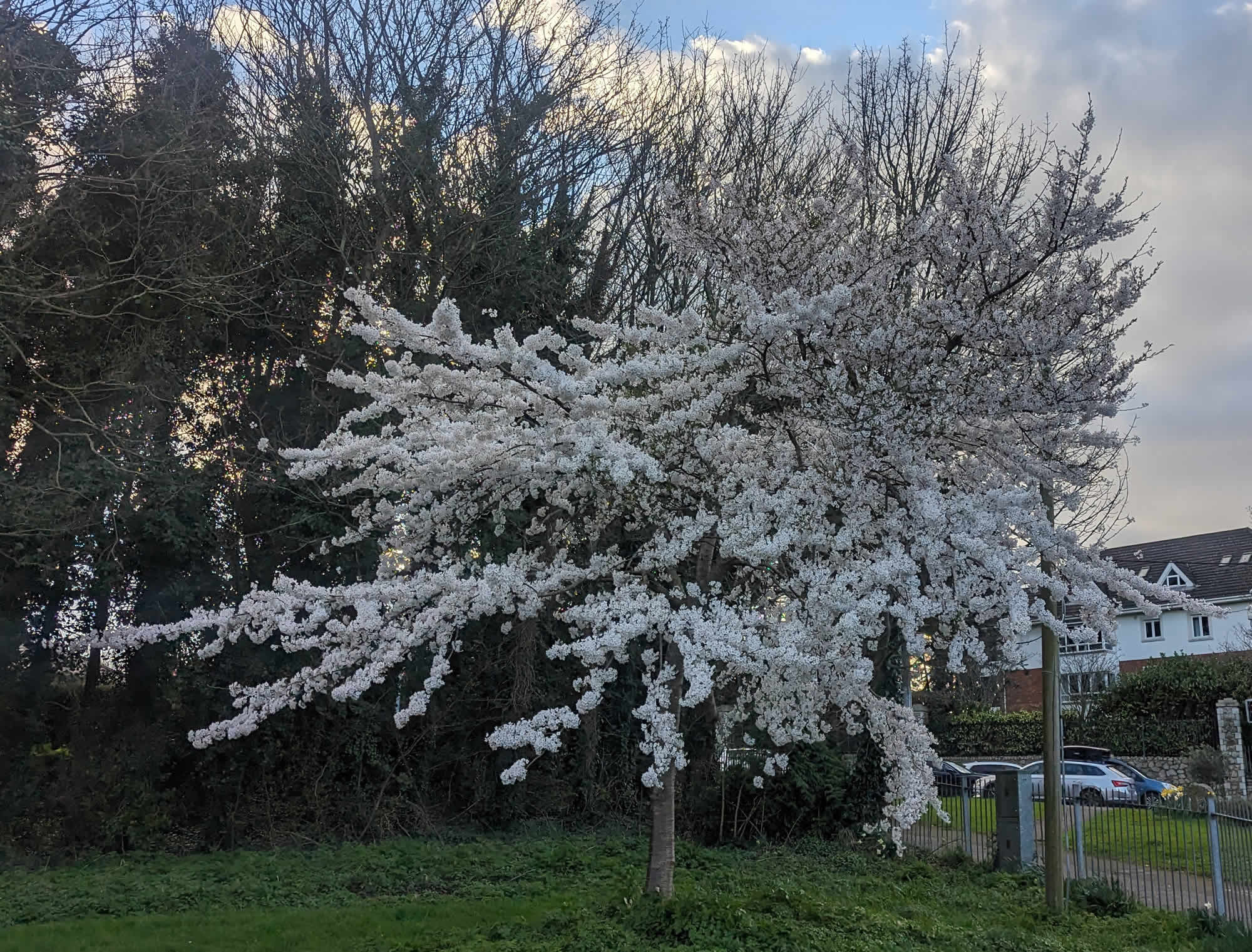
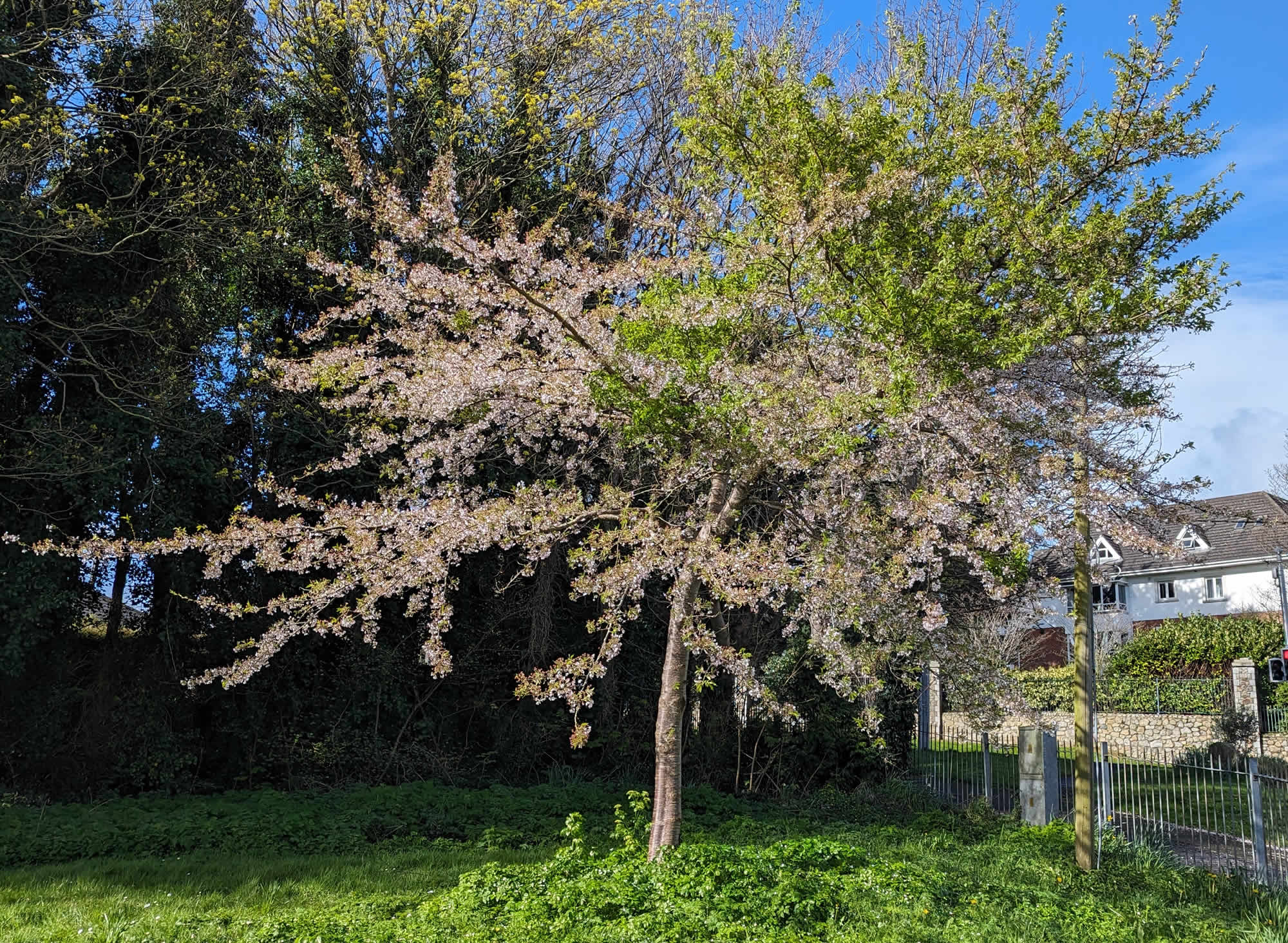
I often wondered why one of them lasted only two weeks, and the other two trees, longer, so this morning, armed with a free app, PlantNet on Android, I stomped down and investigated.
It seems that the one pictured above is a Japanese Flowering Cherry (Prunus serrulate Lindl) and already it is turning green, whereas the other two (below) are a Hybrid cherry (Prunus x yedoensis Matsum), and should stay in flower for a while longer. Or so the app says, it offers several alternatives with a percentage likelihood of each; I picked the most likely.
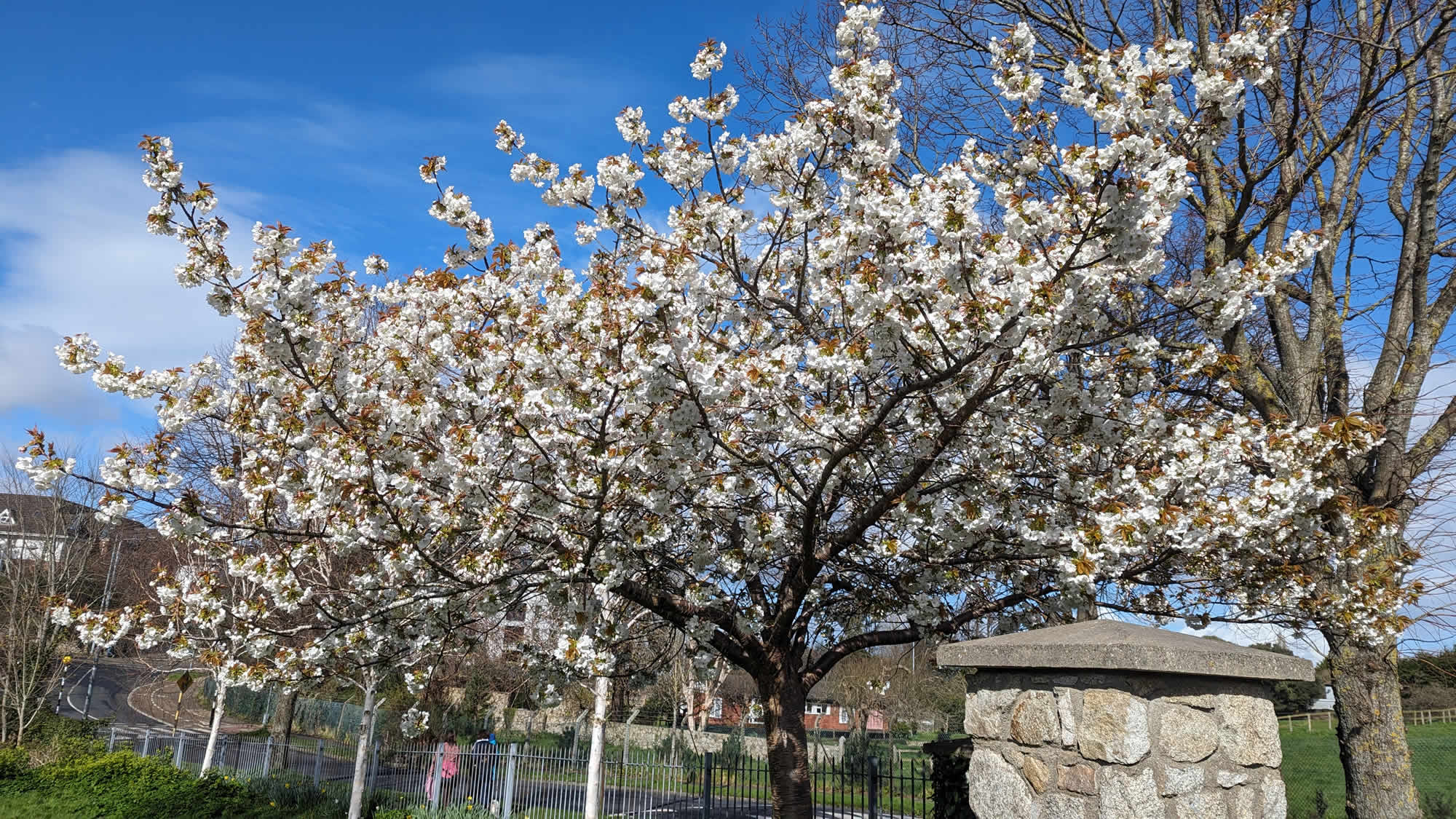
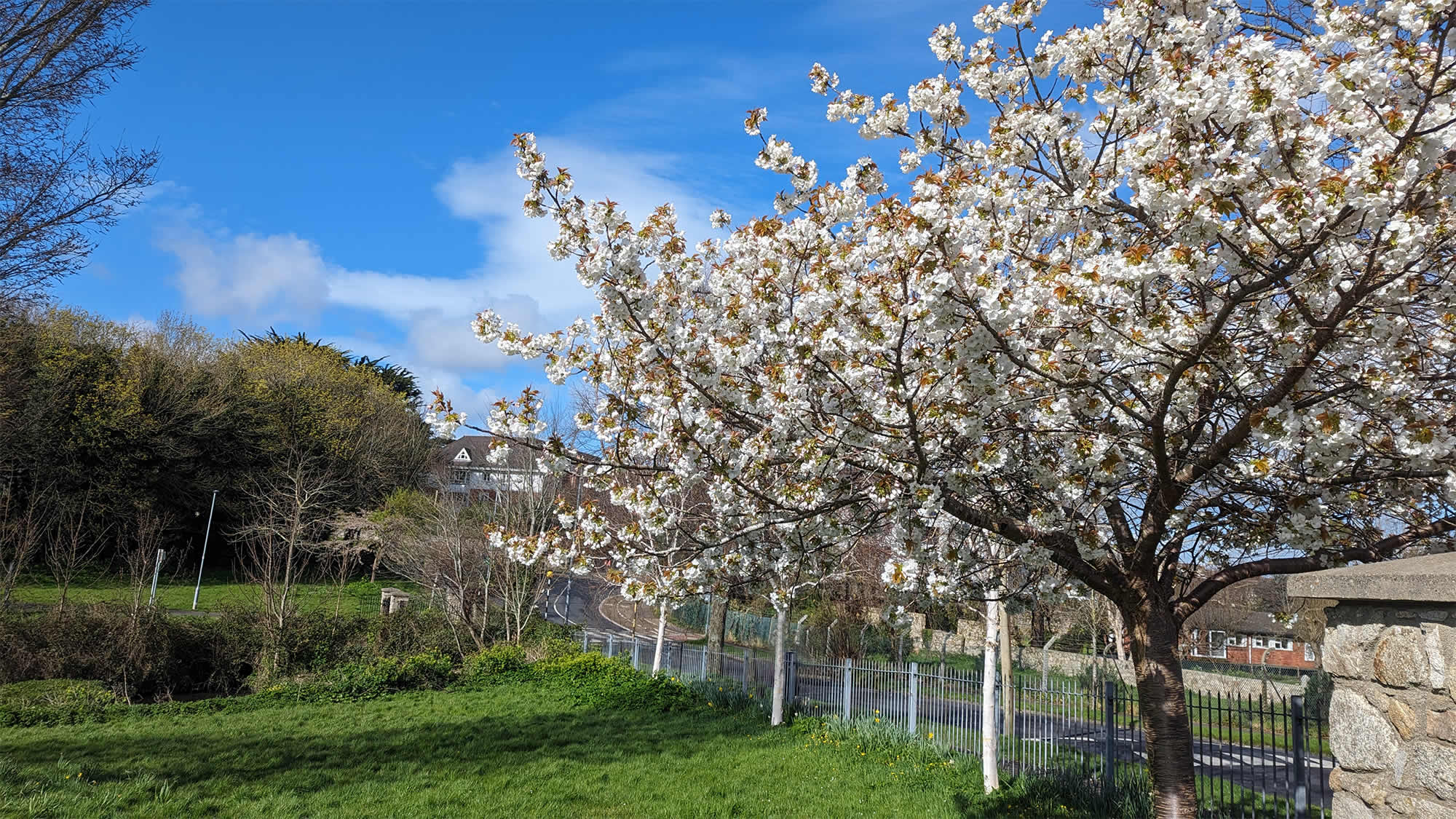
Anyway, the mood lightened, Spring is a time of hope, and I am filled with hope for our world - we are smart enough, we can solve our problems and live in peace if we come together and put aside the political differences. We can do it.
Happy Easter everyone!
What’s coming up

TFS#06 will be out Thursday, 11th April, at 8:00 pm, UTC.
It's free to subscribe to receive newsletters by email here.
Thanks for reading. I hope you can join me again, till then, take care,
Brent
Ever do I gaze upon the blossom, in
Vain regret, for
Today will end and
A different spring will
Greet me on the morrow!
TEIJI-IN UTA’AWASE 20 [89]
Bye for now
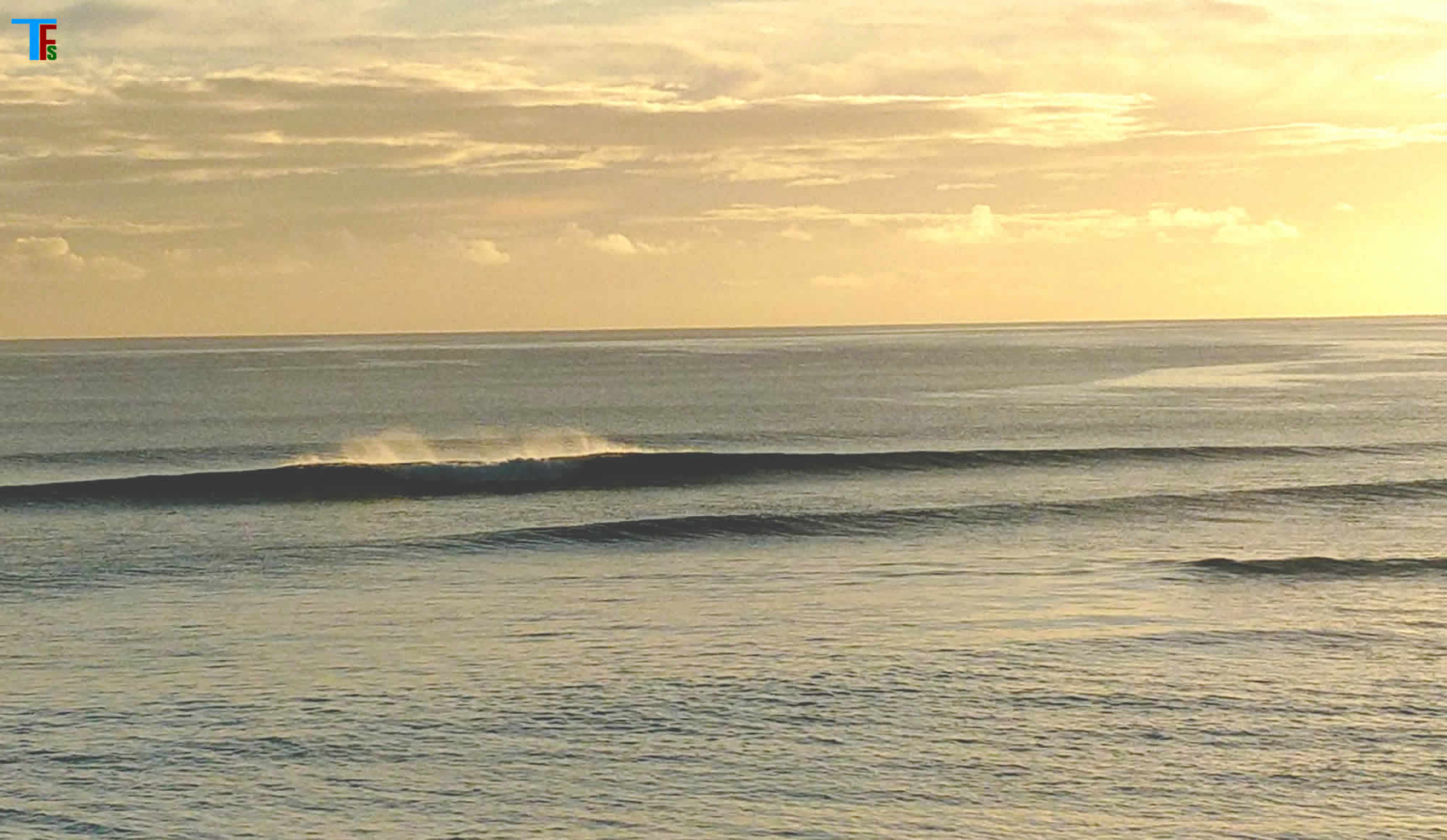
Room 5000 - a short story I wrote in 1981 about a computer becoming sentient
TFS#09 - What do Neoliberalism, Friederich Hayek, markets, algorithms, AI, and creativity have in common? We delve into these subjects for more connections
TFS#08 - What are the correlations between growth, debt, inflation, and interest rates? In this business edition of The Fragile Sea, we go hunting in corporate, institutional, and academic papers for insights in the face of heightened political, economic, corporate, and environmental risks, and more besides!
TFS#07 - We discuss a mixing pot of subjects - the state of AI, will there be food shortages this summer? good things and not so in energy, pandemics - are we ready? some remarkable discoveries, and more!
TFS#06 - Can AI produce true creativity? We discuss music, art and creativity, why human creators have a strong future, and why we must assure that they do
TFS#05 - Practical guides for implementing AI, in other news, a revisit on CRISPR, and events in spaceweather, fake publishing, spring blossoms, and more!
TFS#04 - Has Artificial General Intelligence (AGI) arrived already? We look at the goings on in AI over the past four months
TFS#03 - AGI and machine sentience, copyright, developments in biotech, space weather, and much more
TFS#02 - Sam Altman's $7trn request for investment in AI, economic outlooks, and happenings in biotech, robotics, psychology, and philosophy.
TFS#01 - Economic outlooks, and happenings in AI, social media, biotech, robotics, psychology, and philosophy.
AI Connections Series


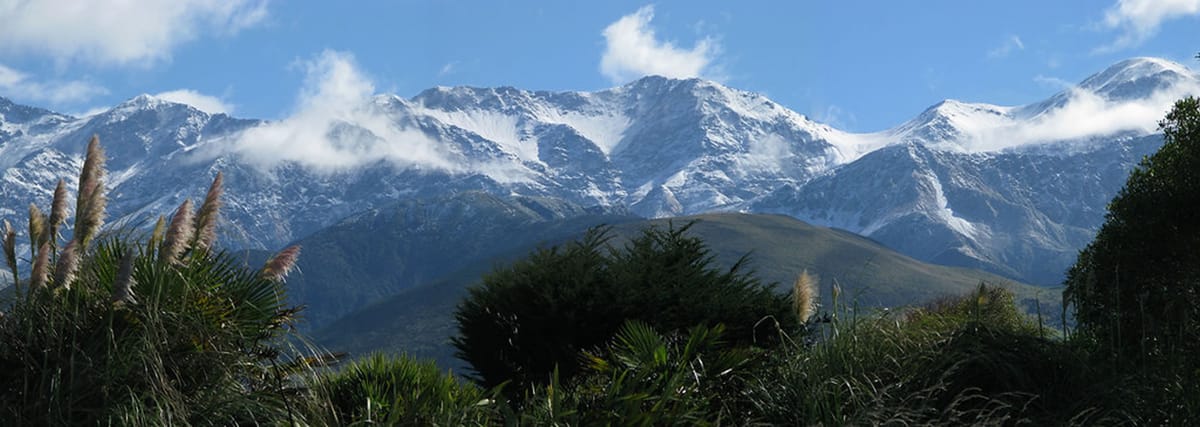
[1]: M. W. Kaelin, ‘Microsoft Copilot Cheat Sheet: Benefits, Price and Versions’, TechRepublic, Mar. 22, 2024. https://www.techrepublic.com/article/microsoft-copilot-cheat-sheet/
[2]: Dr. T. Zia, ‘AI Learns from AI: The Emergence of Social Learning Among Large Language Models - Unite.AI’, Mar. 22, 2024. https://www.unite.ai/ai-learns-from-ai-the-emergence-of-social-learning-among-large-language-models/
[3]: ScienceDaily, ‘Two artificial intelligences talk to each other’, ScienceDaily, Mar. 18, 2024. https://www.sciencedaily.com/releases/2024/03/240318142438.htm
[4]: University of Geneva, ‘Two artificial intelligences talk to each other - Medias - UNIGE’, Mar. 18, 2024. https://www.unige.ch/medias/en/2024/deux-intelligences-artificielles-se-mettent-dialoguer
[5]: D. Coldewey, ‘AI News & Artificial Intelligence’, TechCrunch, Mar. 23, 2024. https://techcrunch.com/category/artificial-intelligence/
[6]: ScienceDaily, ‘How do neural networks learn? A mathematical formula explains how they detect relevant patterns’, ScienceDaily, Mar. 11, 2024. https://www.sciencedaily.com/releases/2024/03/240311205201.htm
[7]: I. Patringenaru and D. Kane, ‘How Do Neural Networks Learn? A Mathematical Formula Explains How They Detect Relevant Patterns’, Mar. 13, 2024. https://today.ucsd.edu/story/how-do-neural-networks-learn-a-mathematical-formula-explains-how-they-detect-relevant-patterns
[8]: Q. Kennemer and E. Roth, ‘Financial Times tests an AI chatbot trained on decades of its own articles’, The Verge, Mar. 23, 2024. https://www.theverge.com/2024/3/23/24106296/ask-ft-generative-ai-chatbot-answers-tool
[9]: Schroeder Brendta, ‘Five MIT faculty members take on Cancer Grand Challenges’, MIT News | Massachusetts Institute of Technology, Mar. 18, 2024. https://news.mit.edu/2024/mit-faculty-take-on-cancer-grand-challenges-0318
[10]: OpenAI, ‘Global news partnerships: Le Monde and Prisa Media’, Mar. 23, 2024. https://openai.com/blog/global-news-partnerships-le-monde-and-prisa-media
[11]: N. Singh, ‘Paperlib: An Open-Source AI Research Paper Management Tool’, MarkTechPost, Mar. 23, 2024. https://www.marktechpost.com/2024/03/23/paperlib-an-open-source-ai-research-paper-management-tool/
[12]: S. Bhattacharya, ‘Google’s Gemini Saga: Technical Details of How the Model Misfired | HackerNoon’, Mar. 22, 2024. https://hackernoon.com/googles-gemini-saga-technical-details-of-how-the-model-misfired
[13]: R. Gupta et al., ‘The Shift from Models to Compound AI Systems’, The Berkeley Artificial Intelligence Research Blog, Feb. 18, 2024. http://bair.berkeley.edu/blog/2024/02/18/compound-ai-systems/
[14]: K. Koidan, ‘The Impact of Custom GPTs: An Overview of Their Key Applications’, TOPBOTS, Mar. 18, 2024. https://www.topbots.com/custom-gpts-key-use-cases/
[15]: K. Koidan, ‘10 Integral Steps in LLM Application Development’, TOPBOTS, Feb. 19, 2024. https://www.topbots.com/llm-application-development/
[16]: M. Yao and K. Koidan, Applied Artificial Intelligence: A Handbook For Business Leaders. TOPBOTS, 2024.
[17]: Deeplearning.ai, ‘Generative AI with Large Language Models’, Coursera, 2024. https://www.coursera.org/learn/generative-ai-with-llms
[18]: Coursera, ‘Deep Learning’, Coursera, Jan. 01, 1970. https://www.coursera.org/specializations/deep-learning#credits
[19]: K. C. S. Basheer, ‘This New Pocket-Sized AI Agent Lets You Voice-Control Your Laptop’, Analytics Vidhya, Mar. 22, 2024. https://www.analyticsvidhya.com/blog/2024/03/open-interpreter-light-pocket-sized-ai-agent-lets-you-voice-control-your-laptop/
[20]: Google DeepMind, ‘Shaping the future of advanced robotics’, Google DeepMind, Jan. 04, 2024. https://deepmind.google/discover/blog/shaping-the-future-of-advanced-robotics/
[21]: M. Lones, ‘Why Doesn’t My Model Work?’, The Gradient, Feb. 24, 2024. https://thegradient.pub/why-doesnt-my-model-work/
[22]: C. Garnett-Bennett, ‘The Power of AI Tools in Digital Marketing: 4 Expert Perspectives’, AI Time Journal - Artificial Intelligence, Automation, Work and Business, Mar. 23, 2024. https://www.aitimejournal.com/the-power-of-ai-tools-in-digital-marketing-expert-perspectives/48336/
[23]: B. Wodecki, ‘Meta Reveals GPU Clusters Used to Train Llama 3’, Mar. 12, 2024. https://aibusiness.com/verticals/meta-reveals-gpu-clusters-used-to-train-llama-3
[24]: B. Wodecki Jr., ‘UN Adopts First Global Artificial Intelligence Rules’, Apr. 22, 2024. https://aibusiness.com/responsible-ai/un-adopts-first-global-artificial-intelligence-rules
[25]: M. Chung, ‘NVIDIA Scores 23 World Records for Route Optimization’, NVIDIA Blog, Mar. 18, 2024. https://blogs.nvidia.com/blog/cuopt-route-optimization-metropolis-omniverse/
[26]: M. deMayo, ‘BNY Mellon Deploys AI Supercomputer Powered by NVIDIA DGX SuperPOD’, NVIDIA Blog, Mar. 18, 2024. https://blogs.nvidia.com/blog/bny-mellon-superpod/
[27]: D. Danelski, ‘Method identified to double computer processing speeds | UCR News | UC Riverside’, Feb. 21, 2024. https://news.ucr.edu/articles/2024/02/21/method-identified-double-computer-processing-speeds
[28]: K.-C. Hsu and H.-W. Tseng, ‘Simultaneous and Heterogenous Multithreading’, in Proceedings of the 56th Annual IEEE/ACM International Symposium on Microarchitecture, New York, NY, USA, Dec. 2023, pp. 137–152. https://www.doi.org/10/gs9r92
[29]: R. A. Smith, ‘AI Is Starting to Threaten White-Collar Jobs. Few Industries Are Immune.’, WSJ, Feb. 12, 2024. https://www.wsj.com/lifestyle/careers/ai-is-starting-to-threaten-white-collar-jobs-few-industries-are-immune-9cdbcb90
[30]: A. Devigne, ‘Council Post: Destroyer Or Creator Of Jobs: How Will AI Disrupt Businesses?’, Forbes, Mar. 21, 2024. https://www.forbes.com/sites/forbesbusinesscouncil/2024/03/21/destroyer-or-creator-of-jobs-how-will-ai-disrupt-businesses/
[31]: D. O’Donovan, ‘Rushing out AI products too quickly will create legal hazards, Bank of America strategy chief warns’, Irish Independent, Mar. 21, 2024. https://www.independent.ie/business/technology/rushing-out-ai-products-too-quickly-will-create-legal-hazards-bank-of-america-strategy-chief-warns/a1775658828.html
[32]: C. Jung and B. S. Desikan, ‘Transformed by AI: How generative artificial intelligence could affect work in the UK – and how to manage it.’ 2024. https://ippr-org.files.svdcdn.com/production/Downloads/Transformed_by_AI_March24_2024-03-25-172800_bvyk.pdf.
[33]: R. Partington, ‘AI ‘apocalypse’ could take away almost 8m jobs in UK, says report’, The Guardian, Mar. 27, 2024. https://www.theguardian.com/technology/2024/mar/27/ai-apocalypse-could-take-away-almost-8m-jobs-in-uk-says-report.
[34]: A. Lowrey, ‘Before AI Takes Over, Make Plans to Give Everyone Money’, The Atlantic, May 17, 2023. https://www.theatlantic.com/ideas/archive/2023/05/ai-job-losses-policy-support-universal-basic-income/674071/
[35]: S. Bhattacharyya, ‘AI and UBI: One Precedes Another?’, ILLUMINATION’S MIRROR, Oct. 30, 2023. https://medium.com/illuminations-mirror/ai-and-ubi-one-precedes-another-29ac1c844d7b
[36]: P. McGlauflin and J. Abrams, ‘Elon Musk says AI will remove need for jobs, create ‘universal high income’’, Fortune, Nov. 06, 2023. https://fortune.com/2023/11/06/elon-musk-ai-artificial-intelligence-universal-income-jobs/
[37]: T. Moody, ‘Embracing the Future: How UBI Can Transform Our AI-Driven World | LinkedIn’, Nov. 23, 2023. https://www.linkedin.com/pulse/embracing-future-how-ubi-can-transform-our-ai-driven-world-moody-gxl2c/
[38]: P. Kelly, ‘AI is coming for our jobs! Could universal basic income be the solution?’, The Guardian, Nov. 16, 2023. https://www.theguardian.com/global-development/2023/nov/16/ai-is-coming-for-our-jobs-could-universal-basic-income-be-the-solution.
[39]: OECD.AI, ‘Universal Basic Income Has Been Tried Over and Over Again. It Works Every Time. - OECD.AI’, Feb. 16, 2024. https://oecd.ai/en/incidents/69002
[40]: Just Think AI, ‘Universal Basic Income and the AI Revolution - Just Think AI’, Mar. 06, 2024. https://www.justthink.ai/blog/universal-basic-income-and-the-ai-revolution
[41]: K. Bindley, ‘The Fight for AI Talent: Pay Million-Dollar Packages and Buy Whole Teams’, WSJ, Mar. 27, 2024. https://www.wsj.com/tech/ai/the-fight-for-ai-talent-pay-million-dollar-packages-and-buy-whole-teams-c370de2b
[42]: M. Molteni, ‘The Code Breaker Is the Crispr Chronicle You Need to Read’, Wired, 2021. https://www.wired.com/story/the-code-breaker-is-the-crispr-chronicle-you-need-to-read/.
[43]: I. Gostimskaya, ‘CRISPR–Cas9: A History of Its Discovery and Ethical Considerations of Its Use in Genome Editing’, Biochemistry (Mosc), vol. 87, no. 8, pp. 777–788, 2022, https://www.doi.org/10/gtn8fq
[44]: Y. Ishino, M. Krupovic, and P. Forterre, ‘History of CRISPR-Cas from Encounter with a Mysterious Repeated Sequence to Genome Editing Technology’, J Bacteriol, vol. 200, no. 7, pp. e00580-17, Mar. 2018, https://www.doi.org/10/gc7vvq
[45]: ScienceDaily, ‘Scientists use quantum biology, AI to sharpen genome editing tool’, ScienceDaily, Nov. 07, 2023. https://www.sciencedaily.com/releases/2023/11/231109141444.htm
[46]: Oak Ridge National Laboratory, ‘Scientists use quantum biology, AI to sharpen genome editing tool | ORNL’, Nov. 07, 2023. https://www.ornl.gov/news/scientists-use-quantum-biology-ai-sharpen-genome-editing-tool
[47]: Mining.com, ‘Cocoa is more expensive than copper as it tops $9,000’, Mining.com. https://www.mining.com/web/cocoa-is-more-expensive-than-copper-as-it-tops-9000/
[48]: Cocoterra, 'Chocolate production per country – Cocoa production statistics', 2022. https://www.cocoterra.com/chocolate-production-per-country/
[49]: Trading Economics, ‘Cocoa - Price - Chart - Historical Data - News’, 2024. https://tradingeconomics.com/commodity/cocoa
[50]: M. Rogerson and T. Conversation, ‘Buying affordable ethical chocolate is almost impossible—but some firms are offering the next best thing.’ https://phys.org/news/2024-03-buying-ethical-chocolate-impossible-firms.html
[51]: A. Meldrich, ‘Types of cocoa, explained | King Arthur Baking’, Oct. 20, 2022. https://www.kingarthurbaking.com/blog/2022/10/20/types-of-cocoa-explained
[52]: V. Barišić et al., ‘The Chemistry behind Chocolate Production’, Molecules, vol. 24, no. 17, p. 3163, Aug. 2019, https://www.doi.org/10/gtn8gk
[53]: spaceweather.com, ‘strongimpact.jpg (1287×910)’, Mar. 24, 2024. https://spaceweather.com/images2024/24mar24/strongimpact.jpg
[54]: T. Shepherd, ‘Northern lights predicted across US and UK on Monday night in wake of solar storms’, The Guardian, Mar. 25, 2024. https://www.theguardian.com/us-news/2024/mar/25/northern-lights-aurora-borealis-us-uk-monday-night-where-to-see-solar-storms.
[55]: Norwegian Centre for Space Weather (NOSWE), ‘Northern Lights / Aurora Borealis – Norwegian Centre for Space Weather (NOSWE)’, 2024. https://site.uit.no/spaceweather/aurora-borealis/
[56]: D. Dobrijevic, ‘Solar maximum will arrive sooner and last longer than previously expected, say scientists’, Space.com, Oct. 30, 2023. https://www.space.com/solar-maximum-expected-2024-new-predictions-suggest
[57]: Wikipedia, ‘Geomagnetically induced current’, Wikipedia. Feb. 09, 2024. https://en.wikipedia.org/w/index.php?title=Geomagnetically_induced_current&oldid=1205238607.
[58]: R. Kataoka and C. Ngwira, ‘Extreme geomagnetically induced currents’, Progress in Earth and Planetary Science, vol. 3, no. 1, p. 23, Aug. 2016, https://www.doi.org/10/gtn8gw
[59]: R. Hajra, ‘Intense, Long-Duration Geomagnetically Induced Currents (GICs) Caused by Intense Substorm Clusters’, Space Weather, vol. 20, no. 3, p. e2021SW002937, 2022, https://www.doi.org/10/gtn8gx
[60]: NOAA, ‘NOAA Space Weather Scales | NOAA / NWS Space Weather Prediction Center’, Mar. 24, 2024. https://www.swpc.noaa.gov/noaa-scales-explanation
[61]: NASA, ‘Solar Flares’, 2024. https://hesperia.gsfc.nasa.gov/sftheory/flare.htm
[62]: Wikipedia, ‘Solar flare’, Wikipedia. Mar. 18, 2024. https://en.wikipedia.org/w/index.php?title=Solar_flare&oldid=1214432122.
[63]: spaceweather.com, ‘Spaceweather Glossary: The Classification of X-ray Solar Flares’, Jan. 26, 2022. https://spaceweather.com/glossary/flareclasses.html
[64]: Wikipedia, ‘Geomagnetic storm’, Wikipedia. Feb. 03, 2024. https://en.wikipedia.org/w/index.php?title=Geomagnetic_storm&oldid=1202700856.
[65]: A. Lee, ‘How Google’s entry into in-game advertising puts a spotlight on an industry in flux’, Digiday, Mar. 26, 2024. https://digiday.com/marketing/how-googles-entry-into-in-game-advertising-puts-a-spotlight-on-an-industry-in-flux/
[66]: A. Mahadevan, ‘A pink slime site used AI to rewrite our AI ethics article’, Poynter, Mar. 27, 2024. https://www.poynter.org/ethics-trust/2024/a-pink-slime-site-used-ai-to-rewrite-our-ai-ethics-article/
[67]: N. R. SM, ‘The Role of Social Media in Gaming Industry’, RetroStyle Games, Jan. 15, 2024. https://retrostylegames.com/blog/social-media-gaming-industry/
[68]: G. Waters and C. Miller, ‘A How-To Guide on Acquiring AI Systems - IEEE Spectrum’, Jan. 23, 2024. https://spectrum.ieee.org/guide-on-acquiring-ai-systems
[69]: G. Waters and C. Miller, ‘5 Ways to Strengthen the AI Acquisition Process - IEEE Spectrum’, Mar. 26, 2024. https://spectrum.ieee.org/5-ways-strengthen-ai-acquisition
[70]: J. A. Fitton, ‘A moment that changed me: my partner drove off and left me – and in solitude I found my self-confidence’, The Guardian, Mar. 27, 2024. https://www.theguardian.com/lifeandstyle/2024/mar/27/a-moment-that-changed-me-my-partner-drove-off-and-left-me-and-in-solitude-i-found-my-self-confidence.
[71]: L. Bouter, ‘Fake academic papers are on the rise: why they’re a danger and how to stop them’, The Conversation, Mar. 06, 2024. http://theconversation.com/fake-academic-papers-are-on-the-rise-why-theyre-a-danger-and-how-to-stop-them-224650
[72]: B. Kurambayev and E. Freedman, ‘Rising number of ‘predatory’ academic journals undermines research and public trust in scholarship’, The Conversation, Sep. 19, 2023. http://theconversation.com/rising-number-of-predatory-academic-journals-undermines-research-and-public-trust-in-scholarship-213107
[73]: Crypto News: BTC, ETH Vs. SEC, Fed Cuts, Crypto in EU, TON & MORE!!, (Mar. 25, 2024). [Video]:. https://www.youtube.com/watch?v=1BtzmHvqZsA.
[74]: G. Brown, ‘Britain seems stuck in a doom loop of poverty. I have a plan to raise billions to address that’, The Guardian, Mar. 27, 2024. https://www.theguardian.com/commentisfree/2024/mar/27/britain-seems-stuck-in-a-doom-loop-of-poverty-i-have-a-plan-to-raise-billions-to-address-that.
[75]: P. de Graaf, ‘Droves of working poor living in cars due to housing shortage in Northland’, RNZ, Mar. 26, 2024. https://www.rnz.co.nz/news/national/512668/droves-of-working-poor-living-in-cars-due-to-housing-shortage-in-northland
[76]: T. Khatun, ‘Understanding the Housing Crisis in Ireland: Causes, Consequences, and Solutions | LinkedIn’, Jan. 12, 2024. https://www.linkedin.com/pulse/understanding-housing-crisis-ireland-causes-solutions-tafura-khatun-lltme/
[77]: Wikipedia, ‘List of tent cities in the United States’, Wikipedia. Mar. 12, 2024. https://en.wikipedia.org/w/index.php?title=List_of_tent_cities_in_the_United_States&oldid=1213281303.
[78]: R. M. Cohen, ‘Homelessness in the US: How should cities address tent encampments? - Vox’, Mar. 08, 2023. https://www.vox.com/policy/2023/3/8/23618237/homelessness-tent-encampments-housing-affordable
[79]: C. Rush, J. Har, and M. Casey, ‘Cities crack down on homeless encampments. Advocates say that’s not the answer | AP News’, Nov. 28, 2023. https://apnews.com/article/homelessness-encampment-sweeps-cities-08ff74489ba00cfa927fe1cf54c0d401
[80]: Shipping Container Home, ‘Shipping Container Homes - YouTube’, 2024. https://www.youtube.com/playlist?list=PL999ZDYL8QbRJ9KzHYhbfTdWjtPvD0wsF
[81]: Shipping Container House - Simple Life, (Aug. 07, 2022). [Video]:. https://www.youtube.com/watch?v=sR_TTO24rSk.
[82]: Wikipedia, ‘Tiny-house movement’, Wikipedia. Mar. 28, 2024. https://en.wikipedia.org/w/index.php?title=Tiny-house_movement&oldid=1215953492.
[83]: The Tiny Life, ‘What Is The Tiny House Movement? Why Tiny Houses?’, The Tiny Life, 2024. https://thetinylife.com/what-is-the-tiny-house-movement/
[84]: M. Keenan, ‘Home truths: ‘Great big lessons from the Tiny House Movement’,’ Irish Independent, May 17, 2019. https://www.independent.ie/life/home-garden/home-truths-great-big-lessons-from-the-tiny-house-movement/38114695.html
[85]: B. D’Silva, ‘Why the tiny house is perfect for now’, Jan. 04, 2022. https://www.bbc.com/culture/article/20211215-why-the-tiny-house-movement-is-big
[86]: M. Thompson, ‘The Tiny House Movement: A Growing Trend in Sustainable Living’, Dec. 26, 2023. https://www.autonomous.ai/ourblog/the-tiny-house-movement-trend-in-sustainable-living
[87]: Thermory, ‘How the tiny house movement has led to sustainable living’, Thermory, Mar. 22, 2024. https://thermory.com/blog-and-news/how-the-tiny-house-movement-has-led-to-sustainable-living/
[88]: J. Brasuell, ‘What Happened to the Tiny Homes Revolution?’, Aug. 14, 2023. https://www.planetizen.com/news/2023/08/125101-what-happened-tiny-homes-revolution
[89]: TEIJI-IN UTA’AWASE, ‘Teiji-in uta’awase 20 | Waka Poetry’, Sep. 07, 2023. https://www.wakapoetry.net/teiji-in-utaawase-20/







Comments ()